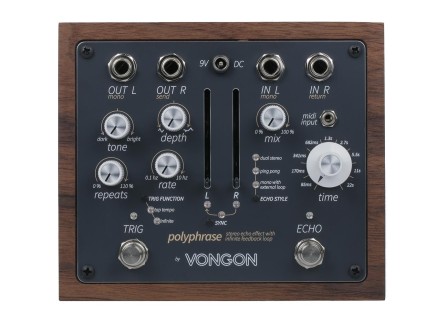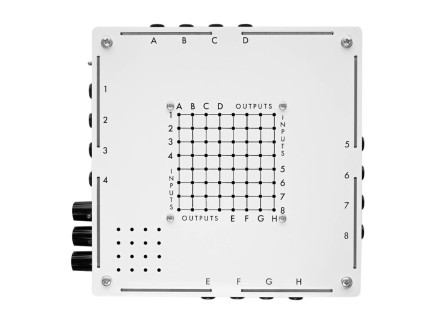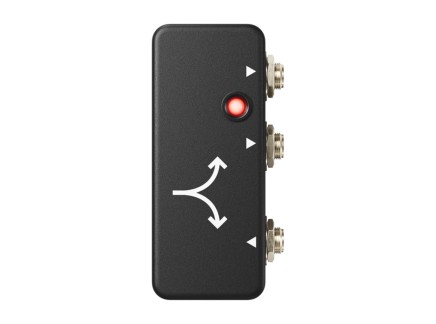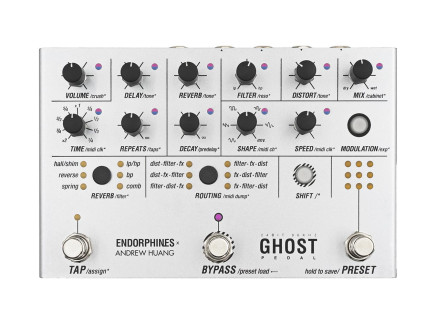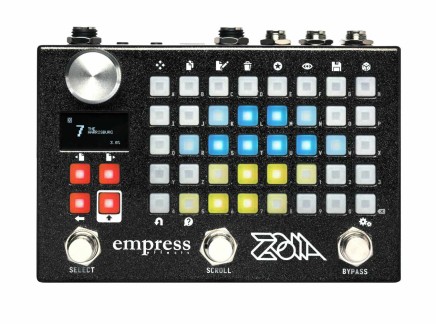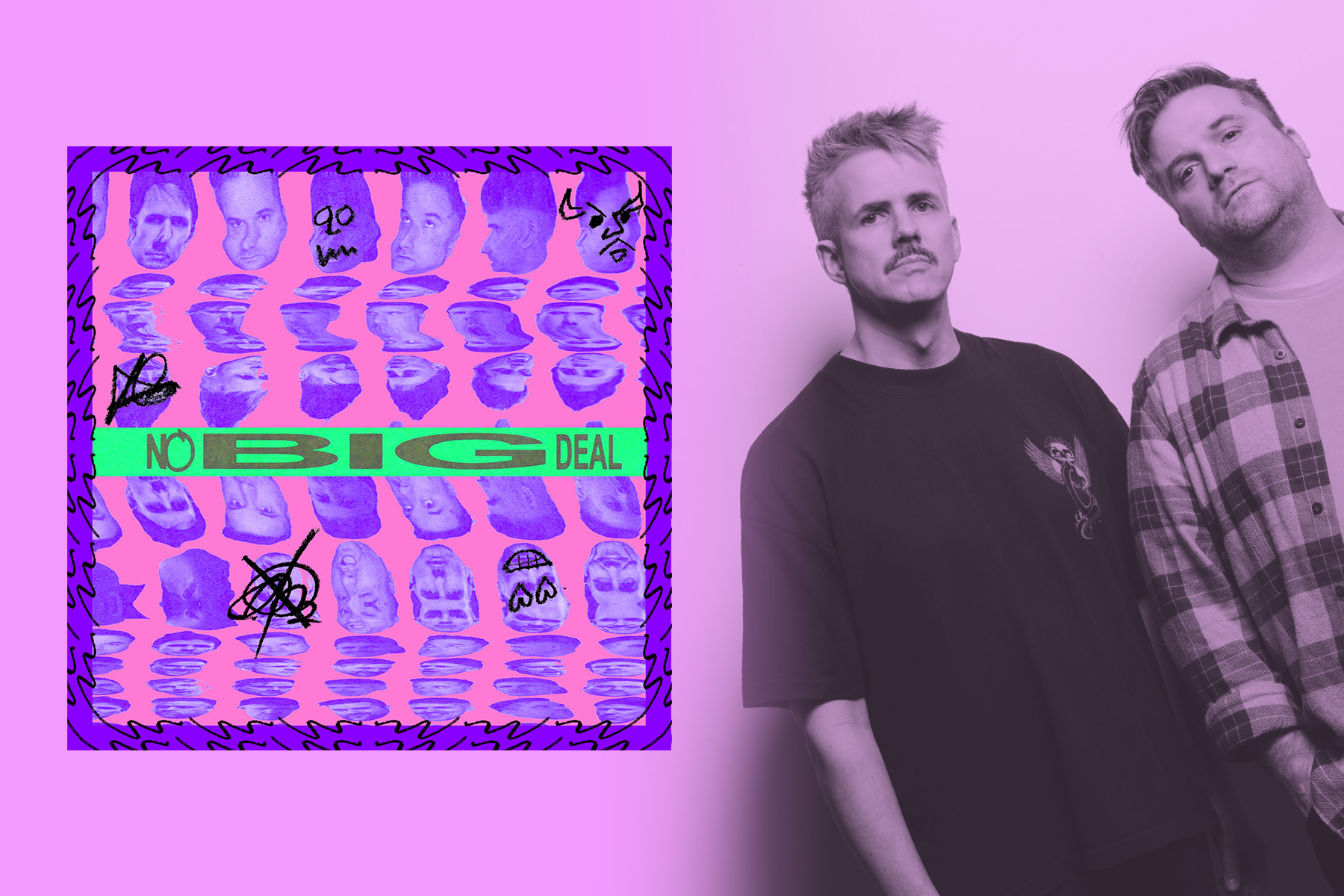A lot of guitar players use a stereo guitar rig setup to add width and depth to their sound. Whether it’s to get the distinct tonal blend of using different amps in tandem, or to create a more robust soundscape, going stereo with your rig is a fun adventure.
So if you’re looking to step your sound up, this type of rig design might be exactly what you need—however, given that guitar is a monaural instrument, building a stereo effect processing setup isn't always entirely straightforward. In this article, we'll point out some of the complications you might run into while planning a stereo pedalboard, along with tactics for designing your ideal stereo rig.
So, let’s go over how stereo guitar pedals work, the different types and their advantages, and some stereo pedalboard design concepts.
What are Stereo Guitar Pedals?
The vast majority of guitars offer only a single, mono output…so, how does interfacing them with stereo pedals work? Stereo guitar pedals usually split the mono guitar signal internally to produce two separate channels—left and right. Both channels are processed independently through digital signal processing or analog circuitry.
The pedal then has two output channels—a left and right output, which may be patched along to other pedals, to a mixer, to an audio interface, or anywhere else you might please.
Types of Stereo Guitar Pedals
The most common types of stereo guitar pedals are time-based effects like delays and reverbs and modulation effects like flangers, phasers, and choruses. Delays and reverbs are commonly used to create a sense of space; modulation pedals allow for several flavors of psychedelic spatial manipulation. But these are far from the only pedal categories that offer stereo models.
There are stereo overdrives and distortions, like the Source Audio Ultrawave distortion/tremolo and Electro-Harmonix Big Muff Pi hardware plugin, and even stereo volume pedals like the BOSS FV-50L. Stereo compressors are ubiquitous in the recording studio, but finding them in guitar pedal form is less likely. But if you want to add some squish and sustain to your stereo pedalboard, the Platform stereo compressor from Electro-Harmonix is a great choice.
Some pedals come in stereo versions, and some are just made to be used in stereo. This is especially true for reverb pedals, due to the nature of the effect. It doesn’t stop with these common pedal categories though. There are stereo guitar pedal synthesizers, octave and pitch shifters, and stereo incarnations of basically every effect type under the sun.
Stereo Pedalboard Design Complications
A stereo rig design certainly doesn’t work for every guitar player’s sound or setup. There are some disadvantages to be aware of if you're playing around with the idea of creating one.
Like in the design of any guitar rig, building out a stereo pedalboard comes with some complications and potentially complex considerations. Luckily they’re nothing major, but let’s address them so you don’t come across any last minute surprises.
More Gear
One of the biggest things to consider is the expense and investment in additional gear. Running a stereo signal means you’ll also need two output devices. Whether you’re using physical amps, running direct to a console through an amp modeler or amp-in-a-box, you may have to double up on some gear or make sure that the end device has enough available channels and stereo functionality.
This is the biggest potential expense. More gear also means more physical space to take up, and more effort when you're loading in and out and moving equipment back and forth.
Using a stereo setup requires more effort and can take up additional space in the environment, as well. Are you the only guitarist in the band? You can set up each amp on either side of the stage—but that’s not always possible, especially in smaller environments. You might have to settle for setting up the amps side by side, but this changes the stereo image…and you'll lose some of the advantages of building a stereo setup, altogether.
Using Mono and Stereo Pedals Together
Unless you have a stereo guitar—and there aren’t many of them—the output signal from your guitar’s electronics is going to be in mono. This gives you two options.
If you’re using a combination of mono and stereo pedals in your signal chain, it’s best to have the mono pedals first in line where possible. When the signal splits to stereo, it should ideally remain in stereo going through to the end of the signal chain.
If every pedal in your chain is stereo, this isn’t so much of a concern. Just input the guitar signal into the mono input of the first pedal and run it stereo out the amps, console, or interface.
Pedalboard Size
You also have to consider the size of your pedalboard. Depending on how big it is, you might have to invest in a larger one due to additional cabling and pedal configuration concerns.
And when it comes to adding more cabling, you’ll essentially need to double up on the run lengths you’re using. you need to think about cable quality and length. Quality cables aren't cheap, but you can save some money here if you have the ability to solder your own cables.
Incidentally, if you haven't looked into learning how to solder, you definitely should. It is a very useful skill for a guitar player to have. If you know how to do it you can do repairs and upgrades to your guitars' electronics or even start building your own effects pedals!
Stereo Pedalboard Tricks
By splitting your guitar signal into stereo, you open up some creative sound options that wouldn’t be available to you otherwise. These are some unique ways you can use your stereo guitar signal to come up with new sounds.
Mono Pedals on Each Channel
As we mentioned, using a stereo setup splits your mono signal into two left and right channels. An interesting technique is to run mono pedals on either channel, and then, if desired to then pass them into a stereo pedal like a reverb before going out to your amps.
Keep in mind that this could introduce phase issues, especially with mono modulation effects. It really depends on how the pedal circuit topology works, but it’s an interesting idea that’s worth looking into!
Signal Splitting
You don’t necessarily need to split your signal through a stereo pedal. You can do it with an A/B/Y switching pedal like the Radial Engineering Big Shot, or a signal splitter pedal like the JHS Pedals Buffered Splitter. Keep in mind, this technically creates a dual mono signal—but you can use the two outputs to route into independent mono signal chains or the inputs of a stereo effect processor (if the processor doesn't directly support mono input). But as always, be aware of potential phasing issues.
Artists Who Use Stereo Setups
Renowned guitarists that run a stereo setup don’t always have the entire signal in stereo. It’s popular with a lot of hard rock and heavy metal players to run the signal into an overdrive at the front of the chain and then split it through a delay or modulation like the MXR M134 Stereo Chorus out to two amps. Zakk Wylde and Randy Rhoads come to mind.
The list of legendary guitar heroes that use a stereo rig design probably won’t come as a surprise. U2’s The Edge is a terrific example of a guitarist with an effects-heavy setup. Aside from his insanely complicated signal chain, he’s the only guitar player in the band. To create the lush soundscapes for their songs, he relies on a multitude of stereo time-based and modulation effects. Classic rock has seen its share of stereo guitar rig setups too. Eddie Van Halen was one of the biggest proponents of the Eventide Harmonizer series when it was new.
Andy Summers of The Police is well known for his use of various modulation pedals like flange and chorus, and the Eventide ModFactor is a great all-in-one choice to tap into those kinds of swirling sounds in lush, immersive stereo.
Alex Lifeson of Rush is another classic rock player who loves his modulation. As one of the greatest power trios ever, his clever use of a stereo rig helps to fill out their enormous sound. Brian May of Queen fame was a huge fan of using stereo techniques in the recording studio just as much as he’s known for his literal wall of Vox AC30 amps.
But it’s not just the classic rock guys. More modern shred players like Steve Vai and Dream Theater’s John Petrucci use extensive stereo rigs. You’ll even find stereo setups used in the rigs of alternative and punk music players like the Gaslight Anthem’s lead guitar player Alex Rosamilia. One of his favorite chorus pedals is the BOSS Dimension-C Waza Craft.
Conclusion
Using a stereo setup offers a lot of advantages, but if you’re building one out for the first time there are some potential complications that need to be taken into account. Chasing novel guitar sounds is all about experimentation, and building out a stereo pedalboard is some of the most fun a guitarist can have in the endless pursuit of tone.
Brandon Stoner is a lifelong musician and audio engineer who owns more guitars than anyone needs. As a lover of all things writing and music technology, he crafts every piece with his dog Max on his lap.
Portfolio | LinkedIn | Twitter




